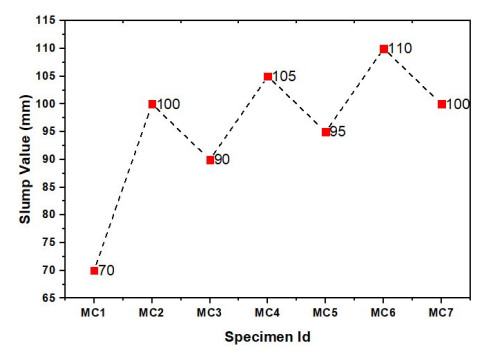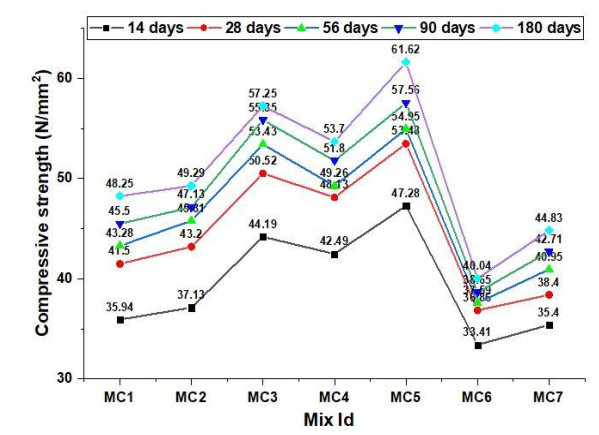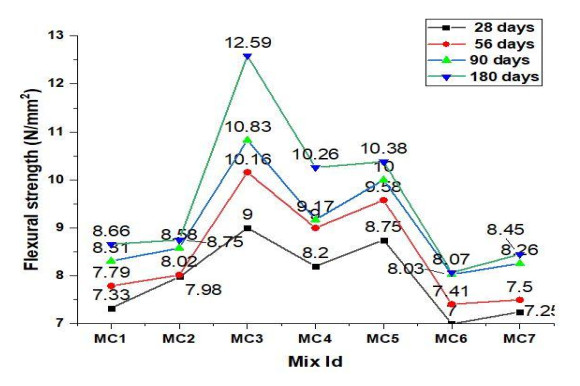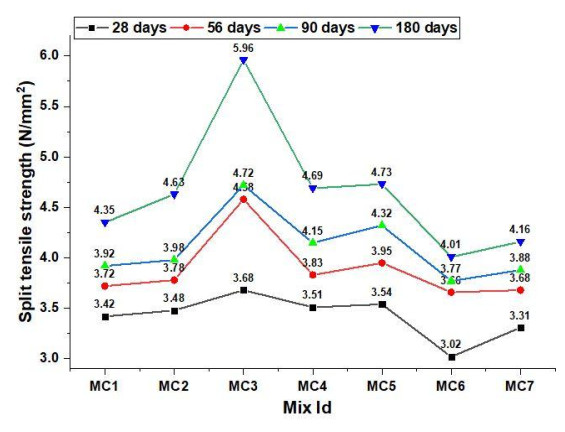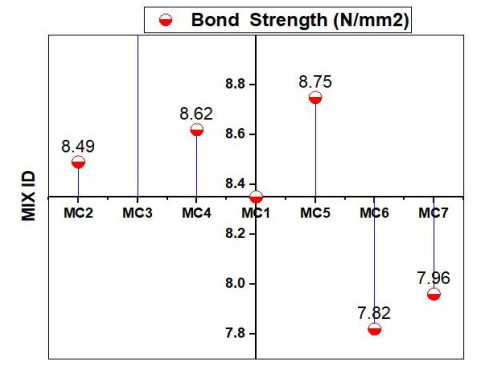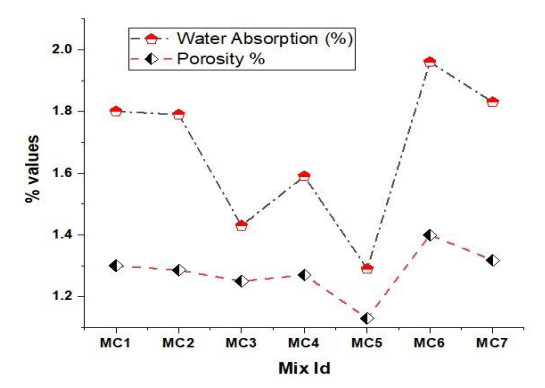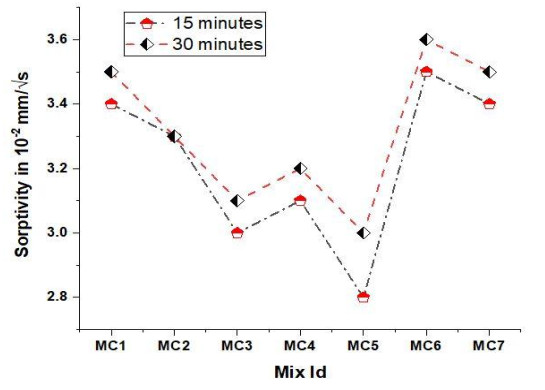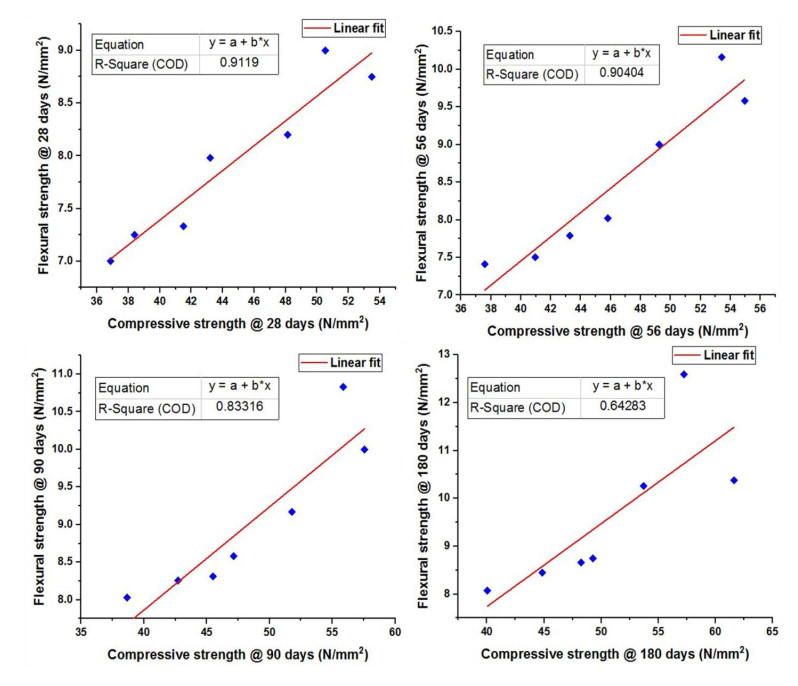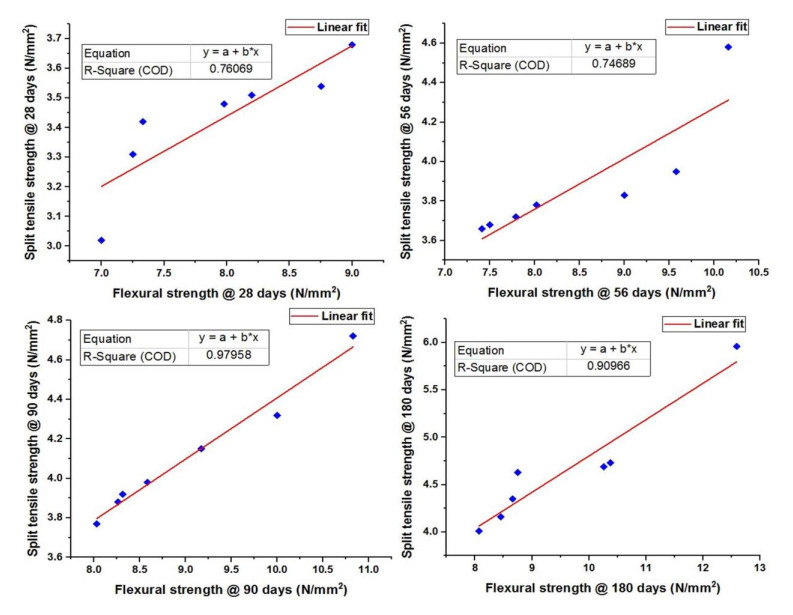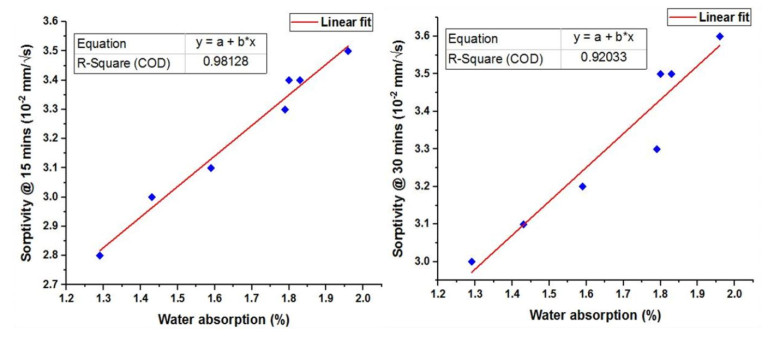This paper deals with the experiments conducted to study the effect of copper slag, GGBFS (Ground Granulated Blast Furnace Slag), metakaolin on the properties of concrete. While GGBFS and metakaolin are used as partial substitutes for cement, copper slag is used as a partial substitute for fine aggregate. This study investigates the mechanical strength of the concrete in terms of compressive strength, flexural strength, split tensile strength, bond strength and durability performance such as water absorption, porosity and sorptivity. In addition the effect of cement and fine aggregate substitution on the microstructure of concrete is also discussed. The results indicated improved strength properties with decreased cost consumption leading to greater efficiency and reduced river sand consumption as an additional benefit.
1.
Introduction
Neurodegenerative diseases (NDs) are as complex as the entire nervous system in terms of their pathogenesis and manifestation. Complications of NDs include abnormalities in speech, movement, cognition, learning, memory, and personality, among others. Interestingly, some of the NDs share common or almost common pathomechanisms, such as late age onset, prolonged incubation period, mutation, neurodegeneration, neuroinflammation, oxidative damage, impaired repair processes, and protein misfolding and aggregation. NDs affect both the structure and function of the neurons and nervous system [1]. Therefore, the preparation of disease model organisms is important to understand the pathogenesis and progression and to resist the disease [2]. In this regard, the generation of cellular and animal models of various NDs has driven numerous research and development activities worldwide [3]. However, it has not been possible to generate a model suitable for all NDs, and even the old ND models appear to be inadequate to answer the emerging problems that challenge the search for a novel model development incorporating cutting-edge scientific knowledge. Animal models are typically created through structural, genetic, and functional manipulation and evaluated based on the after-effects of NDs [1]–[3]. Structural similarities between the brains of humans and rodents have facilitated these processes. Both transgenic and non-transgenic animal models have shown promising results in mimicking and alleviating ND symptoms [1]–[3]. In this context, rat and mouse models are predominantly used worldwide.
We have explored neurodegenerative diseases, considering Alzheimer's disease (AD) as our prime concern, and utilized AD rat models following the method of Nabeshima and Nitta (1994) [4]. Our goal was to search for an AD ameliorating agent that is natural and food-based so that it can be utilizable to all and used as an alternative or integrative medicine as well as a dietary supplement. In this series, we have studied the effects of extracts from mushrooms (Ganoderma lucidum, Reishi mushroom), herbs (Centella asiatica itself and its bio-component madecassoside), shrubs (Curcuma longa), and fruit seeds (Syzygium cumini) on AD model rats for a few years. Our investigations have entailed biochemical and memory and learning related behavioral studies of the AD model organisms along with histopathological scrutinization to substantiate our claims that would aid the ever-increasing number of AD patients, their caregivers, researchers, health professionals, and policymakers worldwide.
With regard to the pathogenesis of Alzheimer's disease, this mini-review briefly discusses how natural components of traditional plant/mushroom extracts can be targeted to alleviate the symptoms and pathological features, as well as their inhibitory effects on various cellular pathways that cause them to provide protection against various symptoms, including learning-related memory impairment. One of the goals of this review is to shed light on research in this regard.
Highlights
-
Ganoderma lucidum as a tool against Alzheimer's disease (AD);
-
Effects of Curcuma longa in AD;
-
The potential of Syzygium cumini seed powder sold by street vendors in third world countries against AD;
-
Madecassoside, purified from Centella asiatica, has anti-AD effects.
2.
Alzheimer's disease (AD)
Alzheimer's disease (AD) is a progressive neurodegenerative disease characterized by cognitive decline and memory impairment [5],[6]. The symptoms usually manifest gradually. Early signs often include forgetfulness, difficulties in solving problems, and challenges in performing familiar tasks [5],[6]. As the disease progresses, those affected may experience speech problems, disorientation in time and space, and changes in mood and behavior [5],[6]. AD is the most common cause of dementia and affects millions of people worldwide [7]. Although its prevalence increases with age, it is not a normal part of aging. The exact cause of Alzheimer's disease remains unclear, but it is due to a complex interplay of genetic, environmental, and lifestyle factors. Pathologically, AD is associated with the accumulation of beta-amyloid plaques and tau tangles in the brain through fibrillation of amyloid beta peptide, leading to neuronal damage and impaired communication between brain cells [6] (Figure 1). The progressive nature of the disease poses significant challenges for affected individuals and their families and highlights the need for further research to better understand its mechanisms and develop effective interventions [7].
3.
Ganoderma lucidum and AD
Ganoderma lucidum, commonly known as Reishi mushroom, has become a topic of interest in relation to Alzheimer's research. Scientific research into the possible effects of Ganoderma lucidum on Alzheimer's disease has suggested that this medicinal mushroom may have neuroprotective and AD ameliorating properties [8]–[14]. G. lucidum polysaccharide-1 (GLP-1) has been reported to modulate cognitive impairment by increasing the expression of interleukin-10 (IL-10) and transforming growth factor-β1 (TGF-β1) in chronic cerebral hypoperfusion (CCH) model mice [15]. GLP promoted neurogenesis and self-renewal of neural progenitor cells (NPC) and therefore may be involved in the recovery of cognitive decline associated with AD [16]. A modulatory effect of GLP on amyloid beta- and lipopolysaccharide-induced neuro-inflammation has been documented for microglia [17]. GLP stimulates the expression of anti-inflammatory cytokines (TGF β) and down-regulates the expression of pro-inflammatory AD-related cytokines (IL-1β, IL-6, inducible nitric oxide synthase) [17]. Furthermore, GLP could alter the morphology, migration, and phagocytic behavior of microglia in amyloid-beta- and lipopolysaccharide-induced neuroinflammation [17]. Dysregulation of the immune pathway is a recently recognized problem in AD pathogenesis [18]. The progression of AD has been linked to the differential expression of T-helper 17 (Th17) and T-regulatory (Treg) cells in the brain. Ganoderic acid A (GAA), a tri-terpene derived from G. lucidum, was found to restore the disrupted Th17/Treg axis in the brain [18]. GAA-driven anti-inflammatory and neuroprotective effects were achieved using the JAK/STAT signaling cascade. Thus, G. lucidum could restore the mitochondrial dysfunction associated with AD and revamp mitochondrial oxidative phosphorylation [18]. Methylation of CpG DNA islands is an important aspect in old age-related NDs, particularly in AD [19]. Alcoholic extract of G. lucidum could reduce the rate of DNA methylation, decrease the expression of neuronal amyloid beta-42 protein and apoptosis, and modulate brain atrophy [19]. The active ingredients identified were ganoderic acid (Mk, C6) and lucidone [19]. Ganoderic acid A and B were identified as the ligands of microtubule affinity regulation kinase 4 (MARK4), which mediates microtubule assembly [20]. By maintaining microtubule structure and cell cycle, ganoderic acids could alter the neuronal cytoskeleton of AD patients [20].
Age-related physiological changes are among the most discernible hallmarks of AD [21]. Ganoderic acid A could alleviate brain and physiological decline [21]. Ganoderic acid A is also associated with delaying the aging process by modulating sphingolipid metabolism and increasing autophagy and telomere length [21]. Aqueous extract of G. lucidum together with other mushrooms could reduce the generation of reactive oxygen species (ROS), stimulate an anti-oxidative state, reduce apoptosis, and boost the survival rate of neuronal cell lines [22]. By reducing Aβ-induced neurotoxicity, this mushroom could improve memory and learning related behavioral changes in AD model mice [22]. In the Morris water maze study, improved memory was observed in the G. lucidum- treated mice [23]. G. lucidum had been praised for its inhibitory effect on acetylcholine esterase, restoring brain acetylcholine levels, which decrease in AD brains [23]. In addition to maintaining memory and redox homeostasis, G. lucidum exhibited strong neuroplasticity properties [24]. Mushrooms could increase the production of neurotransmitters, resist AD pathogenesis, and improve memory and learning-related behavioral performances [25]. Apart from AD-related memory loss, amelioration of morphine-induced memory loss and relief from morphine addiction could be achieved by taking G. lucidum aqueous extract [26]. The bioactive compounds contained in G. lucidum, through their anti-oxidative and neuroprotective effects and cognitive enhancement, provide a potential avenue for AD therapeutic interventions. Although the results are promising, further comprehensive studies are required to determine the specific mechanisms involved and to determine the optimal dosage and treatment protocols for incorporating G. lucidum into the AD treatment strategy.
4.
Curcuma longa and AD
Curcuma longa, commonly known as turmeric, is the subject of growing interest in Alzheimer's disease research [27]. At the center of this attention is curcumin, a bioactive compound abundant in turmeric. Numerous studies have examined the possible therapeutic effects of curcumin in Alzheimer's disease and demonstrated its diverse properties [28]. With its well-documented anti-inflammatory and antioxidant properties, curcumin shows promise in alleviating the neuro-inflammation and oxidative stress associated with Alzheimer's disease [29]. The ability of curcumin to penetrate the blood-brain barrier further highlights its potential as a neuroprotective agent [30]. In addition, research suggests that curcumin may play a role in modulating the aggregation of beta-amyloid plaques, an important pathological feature of Alzheimer's disease pathology [31]. Beta site amyloid precursor protein cleaving enzyme 1 (BACE-1) is a regulatory enzyme and the first enzyme in the Aβ synthetic pathway [31]. BACE-1 is also a target for AD drugs. The BACE-1 inhibitory effect of curcuminoids appears to be promising against the progression of AD [31]. Moreover, lifestyle modification of the AD model Drosophila melanogaster opens new perspectives for the therapeutic use of curcuminoids and related compounds in AD [31]. The anti-oxidative, anti-neuroinflammatory, and anti-hypercholesterolemic effects of curcumin conferred by its polyphenol content might also be implicated in its AD-ameliorating effects [32]. Recently, the inhibitory effects of curcumin on hippocampal Aβ and neurofibrillary tau deposits, acetylcholine esterase, caspase-3, IL-1β, and TNFα, along with reduced ROS generation and an increase in the anti-oxidative enzyme glutathione synthase (GSH), have been reported in AD model rats [33]. In parallel, AD model rats treated with curcumin had improved memory and learning related behavioral performance [33]. So far, different bio-components of C. longa providing AD amelioration are, inter alia, curcumin, calebin, demethoxycurcumin, and curcuminoids [34].
Although the results are encouraging, it is important to recognize the complexity of Alzheimer's disease and the need for larger clinical trials to determine the effectiveness of C. longa in real-world applications. Research into the effects of turmeric on Alzheimer's represents an exciting avenue to advance our understanding and potentially develop new therapeutic strategies for this debilitating neurodegenerative disease.
5.
Syzygium cumini and AD
Syzygium cumini, commonly known as jamun or Indian blackberry, has recently drawn interest from researchers studying its possible effects on Alzheimer's disease. While scientific research on the effect of Syzygium cumini on Alzheimer's disease is still in its early stages, initial studies suggest that the fruit possesses bioactive compounds with antioxidant and anti-inflammatory properties [35]. Our study suggested that S. cumini seed extract could reduce the oligomerization of Aβ and decrease the levels of Aβ and TNFα in the hippocampus [36]. At the same time, it improved hippocampal levels of brain derived neurotrophic factor (BDNF), postsynaptic-density protein 95 (PSD-95), synaptosomal-associated protein (SNAP-25), and tyrosine-kinase B (TrkB). These modulatory effects resulted in improved cognitive and memory related behavioral performance of AD model rats in an 8-armed radial maze study [36]. In a relevant study, Malik et al. [37] showed that S. cumini seed extract led to improved memory and learning related behavior as well as biochemical attainments in AD model mice through reduced acetylcholine esterase activity, reduced oxidative stress, and heightened antioxidant activity [37]. The active bio-components conferring these AD amendment attributes were identified as flavonoids and phenol derivatives such as β-farnesene, caryophyllene, humulene, and phytol [37]. Additionally, the neuroprotective effects of S. cumini include an acetylcholine esterase inhibitory effect along with attenuation of neuro-inflammation [38]–[40]. The β-secretase inhibitory effect of S. cumini has also been associated with its AD ameliorative potential [41].
However, it is important to note that existing evidence is limited, and further rigorous studies are essential to substantiate these findings and elucidate the specific mechanisms involved. The study of S. cumini in the context of Alzheimer's disease represents an interesting avenue for future research and holds the potential for new insights into natural compounds that may contribute to the development of therapeutic strategies for this complex and challenging neurological disease.
6.
Madecassoside and AD
Madecassoside, derived from Centella asiatica, could attenuate AD pathogenesis by decreasing hippocampal deposition of Aβ1-42, oxidative stress, proinflammatory cytokine TNFα, and cathepsin D [42]. Madecassoside could reduce oligomerization of Aβ fibrils, an important step in AD pathogenesis [42]. Madecassoside could improve the diminished spatial memory of AD model rats. Our findings were further supported by molecular docking studies where madecassoside showed strong binding affinity with Aβ1-42 [43]. In addition to our findings, the AD-alleviating effect of madecassoside has been attributed to its harmonizing effect on circadian rhythms and sleep patterns, elimination of anxiety, and improvement of cognitive performance, particularly memory and learning-related behavioral modulation [44].
7.
Comprehensive and integrated therapeutic approach against AD
Due to its complex and multifaceted nature, Alzheimer's disease remains incurable. The underlying causes of the disease involve complex interactions of genetic, environmental, and lifestyle factors, making it difficult to determine a single target for a cure. By the time AD symptoms appear, significant neurological damage has already occurred, complicating further possible treatment strategies. Protecting against AD requires a comprehensive approach that focuses on preventive measures and lifestyle changes. Maintaining a healthy and active lifestyle, including regular exercise, a balanced diet rich in antioxidants, and adequate sleep, is associated with a lower risk of developing AD. Cognitive stimulation through activities such as reading, puzzles, and social engagement can also contribute to brain health. When exploring alternatives to Alzheimer's treatment, research is increasingly focusing on personalized medicine and precision therapies. Tailored interventions based on a person's genetic makeup and specific biomarkers can enable more targeted and effective treatments. Innovative approaches such as immunotherapies and gene therapies are also being investigated. Given the lack of a definitive cure, emphasis on early detection and intervention is crucial. Regular cognitive assessments, advanced imaging techniques, and biomarker identification can help detect Alzheimer's disease in its early stages, when interventions may be more effective.
8.
Conclusions
In summary, a holistic approach that combines lifestyle changes, early detection strategies, and innovative therapeutic options is needed to address the challenges of Alzheimer's disease. While a complete cure may remain elusive, ongoing research and a multidimensional approach provide hope for improved outcomes and quality of life for individuals affected by Alzheimer's disease and their families.
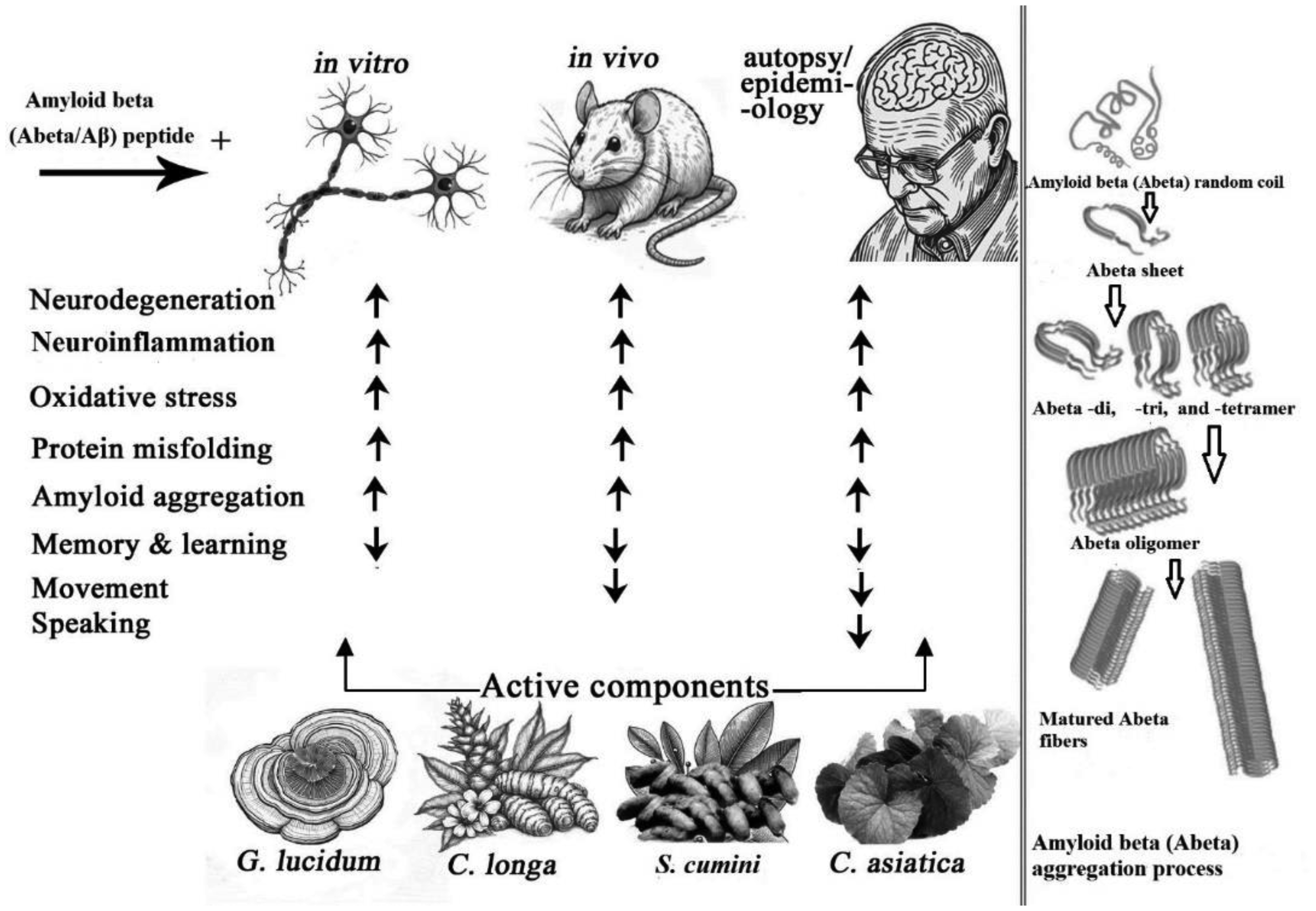









 DownLoad:
DownLoad:


